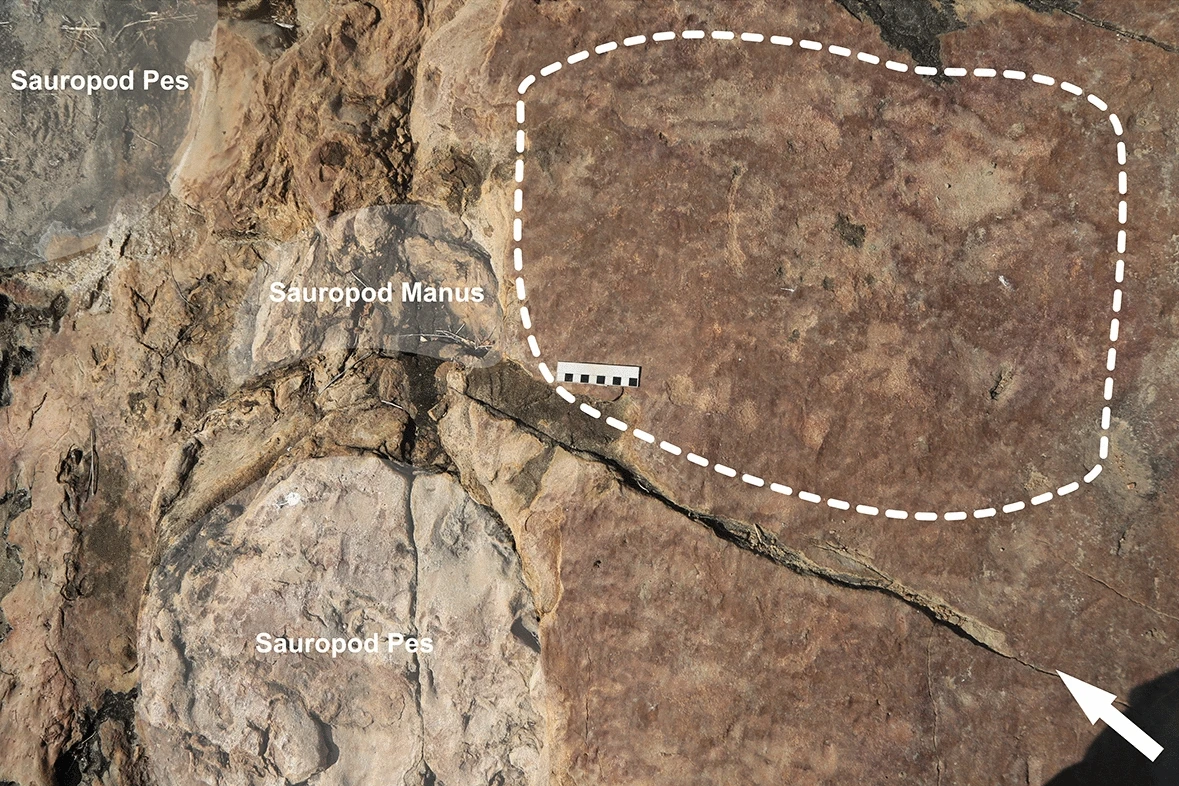
In northeastern Brazil, in a geological formation called the Sousa Basin, 9,000-year-old man-made petroglyphs have been found alongside 100-million-year-old dinosaur footprints.
A recent study claims that the prehistoric art was deliberately created by humans who were careful not to disturb the nearby dinosaur tracks, with many of the petroglyphs a mere two to four inches from the fossilized prints. Some of the glyphs even appear to be illustrated representations of the footprints.
“Despite the profusion of identified petroglyphs, no overlap was observed between these inscriptions and the fossilized footprints,” wrote the paper’s authors. “In none of the cases was it found that the creation of a petroglyph resulted in damage to the existing footprints, suggesting thoughtfulness by the makers.”
Comparison between tridactyl tracks and tridigit petroglyph. (A) Theropod fossil track from Serrote do Letreiro site; (B) Recent Palaeognathae track (by Steve Slocomb available on Flickr under CC BY 2.0 Deed); (C) Tridigit petroglyph from Serrote do Letreiro site. Scale bar = 5 cm. Photo: Leonardo P. Troiano, Heloísa B. dos Santos, Tito Aureliano and Aline M. Ghilardi; Scientific Reports
The archaeological site, known as Serrote do Letreiro, or Signpost Hill, is located within Dinosaur Valley, a natural monument that contains about 20 fossilized dinosaur prints from 80 different species. The tracks have been known to researchers since the early 20th century, but the petroglyphs have gone largely ignored until now.
While the Sousa Basin has ideal conditions for preserving footprints, that is not the case for bones, whether dinosaur or human. As such, researchers were unable to pinpoint the exact species of dinosaurs that left the tracks. It is speculated, however, that the prints belong to various types of dinosaur, including the carnivorous theropods, long-necked sauropods, and bipedal herbivorous ornithopods. The fossilized markings resemble the footprints of the rhea, Brazil’s largest flightless bird. The study’s authors suggest this resemblance may have allowed the ancient artists, who are assumed to have known nothing of the existence of dinosaurs, to recognize and interpret the prints.
As for the petroglyphs, researchers found they were created by means of perforation (utilizing a stone hammer to create depressions on the surface) and scraping (via a process of rubbing or scratching a stone against the ground’s surface to design an engraving). The designs themselves were largely etched circles with geometric patterns within them, resembling sunbursts and crosses.
Exampls of petroglyphs found at the Serrote do Letreiro Site Photo: Leonardo P. Troiano, Heloísa B. dos Santos, Tito Aureliano and Aline M. Ghilardi; Scientific Reports
A lack of organic materials prohibited the scientists from accurately carbon-dating the rock art, but comparable human burial sites in the region have been dated as far back as 9,400 years ago.
Other instances of humans creating rock art in the vicinity of dinosaur footprints have been found in Australia, Poland, and the Poison Spider Dinosaur Tracks in Zion National Park, Utah. However, no site has recorded manmade engravings discovered alongside fossilized prints, such as those in the Serrote do Letreiro.